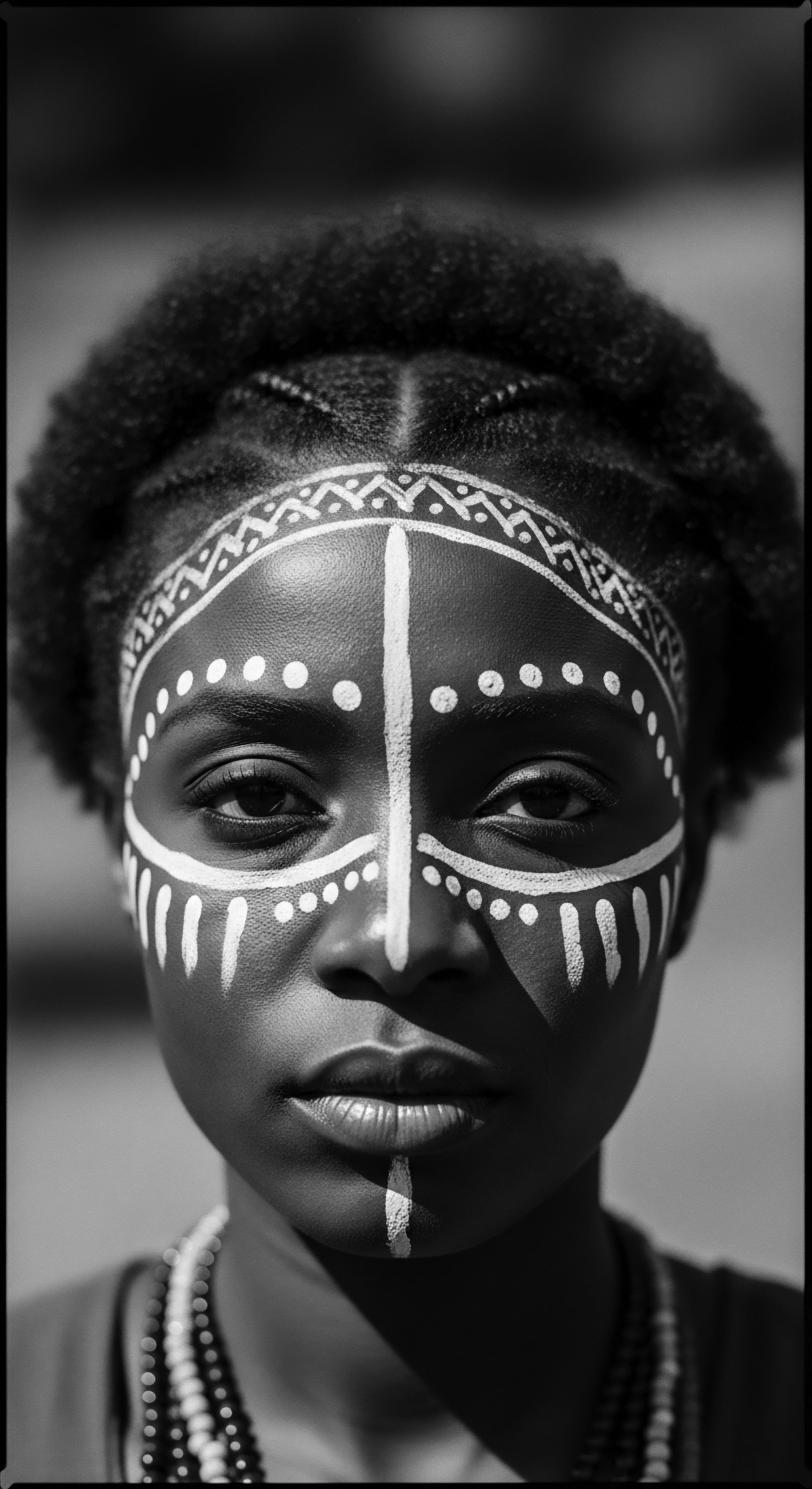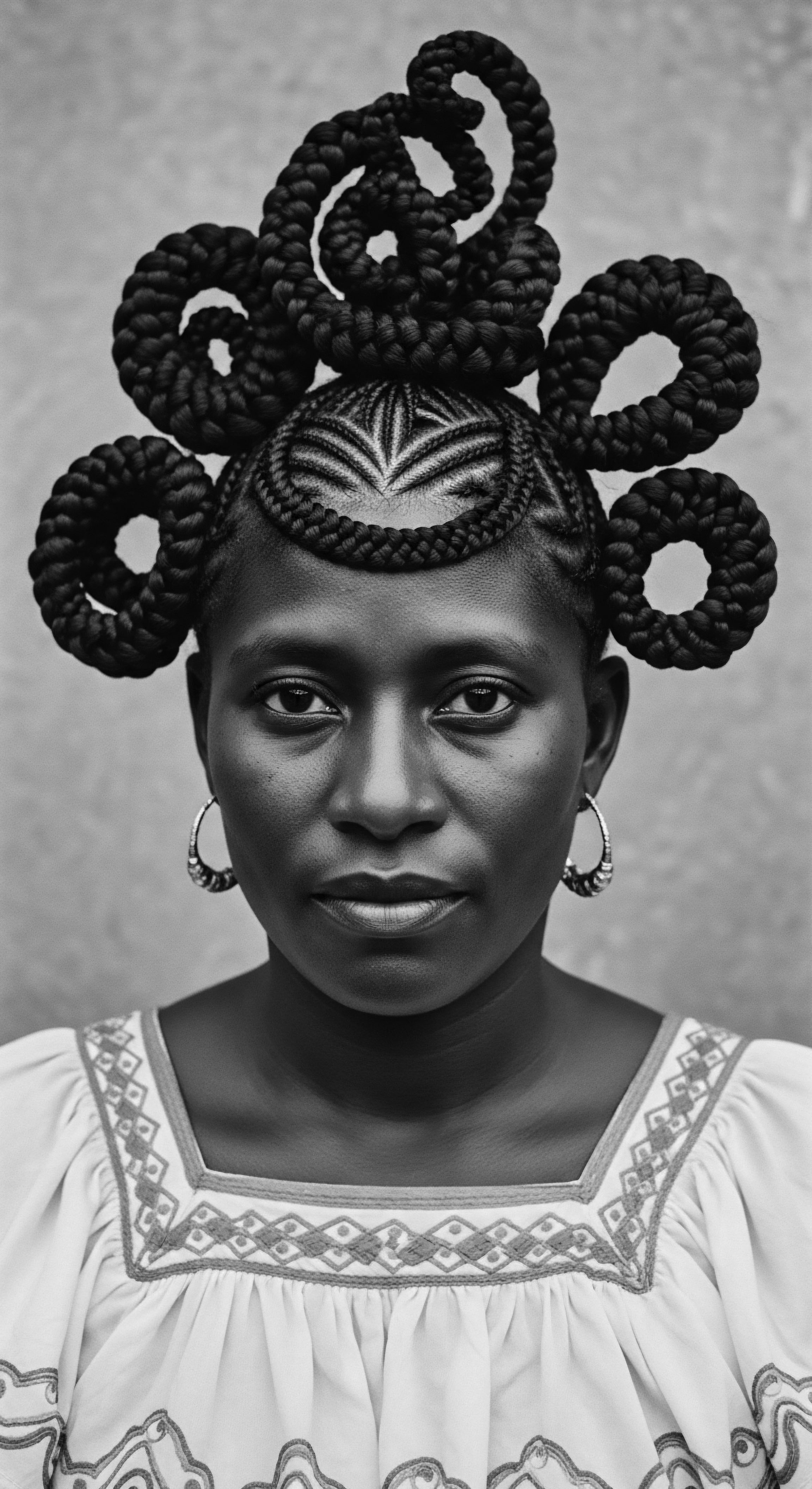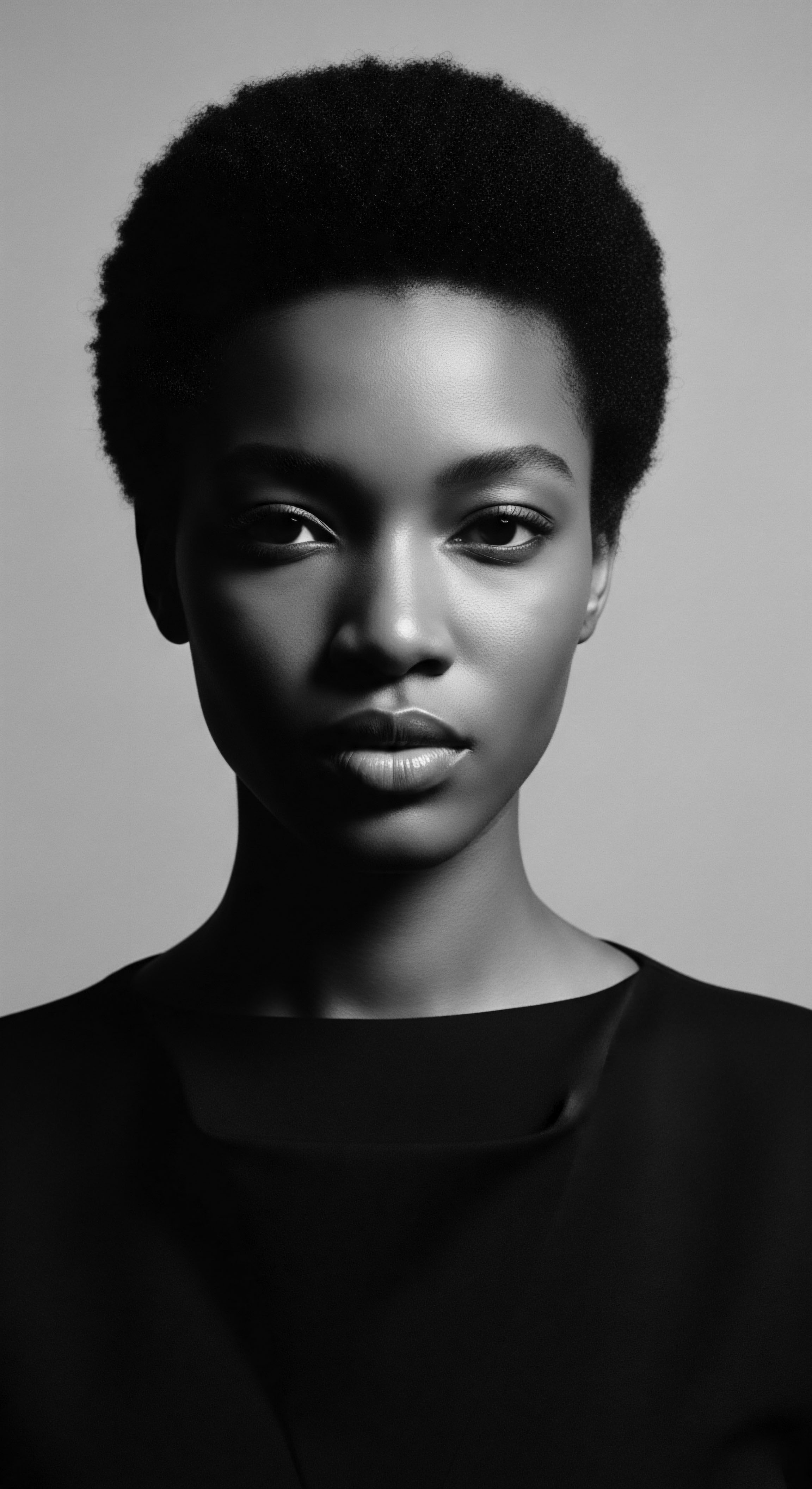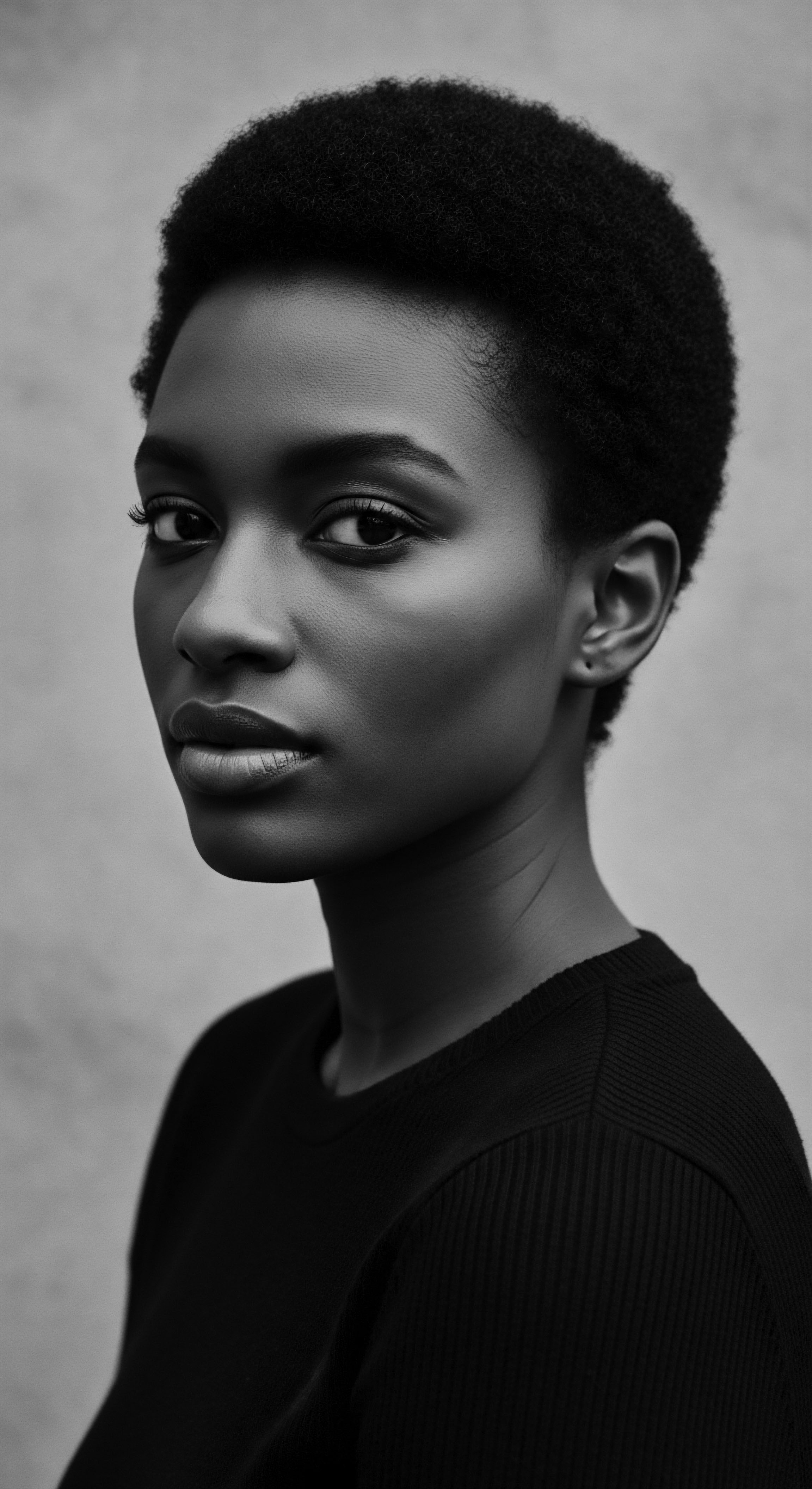
Roots
Do you recall the faint whisper carried on the wind, perhaps from a tale your grandmother shared, or a scent that instantly transported you to sun-drenched earth and communal care? It is in those profound recollections that we find the original stories of hair, particularly textured hair, and its ancestral bond with oils. Our hair, a living extension of our spirit, has always held a mirror to our lineage, our resilience, and our connection to the earth’s bounty. To understand the tradition of oiling is to trace pathways back through generations, to the very cells that shape our strands and the wisdom that guided hands long before us.
The earliest practices of anointing hair with oils were not mere acts of personal adornment. They were interwoven with survival, spiritual accord, and societal position. Long before cosmetic industries as we know them existed, human communities relied upon the gifts of their environment to care for their crowns. This practice is most evident when examining the heritage of textured hair, where centuries of knowledge ensured vitality in varied climates and conditions.

Textured Hair’s Ancient Blueprint
Consider the intricate biology of textured hair. Its elliptical shape, its natural coil, its tendency to resist moisture while displaying an openness to environmental influences—these are not deficiencies. They are expressions of evolutionary adaptation, designed for specific climates and lifestyles.
The very structure of Afro-textured hair, with its numerous twists and turns, often means that the natural sebum produced by the scalp struggles to travel down the entire length of the strand, leaving the ends particularly vulnerable to dryness. This inherent characteristic made external lubrication not a luxury, but a fundamental aspect of hair health.
Ancient communities, without the benefit of microscopes, instinctively understood these attributes. Their care rituals were empirically developed, passed down through oral tradition and lived practice. The oils they selected—from the fruit of the shea tree, the palm, or various nuts—were chosen for their specific properties ❉ their ability to seal in moisture, provide protection from the elements, and to impart a desirable sheen.
Ancient oiling traditions for textured hair arose from an intuitive understanding of its biological needs and environmental conditions.

Anatomical Wisdom and Traditional Care
The scalp itself, the source from which each strand grows, also received significant attention in these early oiling customs. A healthy scalp was understood as the ground for strong hair. Massaging oils into the scalp was believed to stimulate the skin, encouraging natural blood flow and ensuring that the hair follicles received adequate nourishment. This ancestral practice of scalp treatment with oils supported the integrity of the hair from its very beginning, influencing the length and density that was so often admired in many African societies.
Traditional names for specific hair types or conditions, though not always direct translations of modern classification systems, spoke volumes about communal understanding. The rich vocabulary reflected textures, lengths, and the way hair responded to different care methods. This deep connection between observation, language, and ancestral solutions for hair health is a testament to the cumulative knowledge of Black and mixed-race communities.
| Traditional Oil Source Shea Butter (from Karite tree) |
| Primary Benefit in Ancient Care Moisture sealant, skin protection, shine |
| Modern Scientific Understanding Rich in fatty acids (oleic, stearic), vitamins A and E; provides emollients and antioxidants |
| Traditional Oil Source Palm Oil (from oil palm) |
| Primary Benefit in Ancient Care Lubrication, pest prevention, hair dressing |
| Modern Scientific Understanding High in Vitamin E (tocotrienols), antioxidants; can coat hair shaft for protection |
| Traditional Oil Source Castor Oil |
| Primary Benefit in Ancient Care Strengthening hair, promoting vitality |
| Modern Scientific Understanding Ricinoleic acid content, known for anti-inflammatory properties; thought to support scalp circulation |
| Traditional Oil Source These oils, drawn from the bounty of nature, represent a heritage of care that spans millennia, their uses validated by both ancient wisdom and contemporary science. |

Ritual
The application of oils to hair was never a solitary, fleeting gesture. It was a rhythmic practice, often communal, steeped in social connection and cultural meaning. These traditions shaped not only the physical state of the hair but also the communal bonds that upheld identity across generations. The movements of hands, the shared stories, the passing down of techniques—all formed an indelible mark on the soul of a strand, creating a living archive of care.
In many pre-colonial African societies, hair care rituals, including oiling, could last for hours or even days, serving as significant social opportunities for families and friends to connect. This deep communal aspect ensured that knowledge was transmitted not just through words, but through the tangible act of shared grooming. The selection and preparation of oils, often from locally sourced plants, were themselves part of this tradition, linking the people directly to their environment and its gifts.

Oiling as a Component of Protective Styling
For textured hair, prone to dryness and breakage, protective styles were and remain fundamental. Braids, twists, and locs minimized manipulation, shielded strands from environmental stressors, and helped retain length. Oils were indispensable in the creation and maintenance of these styles.
They provided lubrication, allowing hair to be parted and woven with less friction. They sealed moisture into the strands before and after styling, maintaining the hair’s suppleness over extended periods.
- Palm Oil and Palm Kernel Oil were commonly used in West and Central Africa to oil the scalp and dress hair, providing necessary lubrication for braiding and twisting practices.
- Shea Butter, a staple from the ‘shea belt’ stretching across West African countries, was used as a base for hair applications, especially when mixing with traditional powders like Chébé, to provide moisture and seal the cuticle for length retention.
- The preparation of hair for intricate braided styles in pre-colonial Africa involved washing, combing, and oiling, a comprehensive ritual that speaks to the attention given to hair.
The rhythmic application of oils transformed hair care into a ceremonial connection, weaving together tradition, communal bonds, and the very essence of heritage.

The Transformation of Tools and Techniques
Historical tools were thoughtfully crafted to work in concert with these rich emollients. Wide-tooth combs, often made from wood or bone, facilitated detangling, a process made smoother with the application of oils. These tools, sometimes adorned with cultural symbols, served as extensions of the hands, guiding and shaping hair while preserving its integrity. The process was a dance of tradition, skill, and an innate understanding of the hair’s unique structure.
The practices extended beyond daily care to more specialized treatments. Hot oil applications, where oils were warmed before being massaged into the scalp and hair, were known to enhance penetration and efficacy. This allowed the fatty acids and other beneficial compounds in the oils to truly coat and condition the hair. This method was not just about physical benefit; it was a sensory experience, a moment of deep comfort and self-care passed through familial lines.
Consider the ancient Egyptians, who viewed hair care as a reflection of health, beauty, and status. They relied on various natural oils, such as Moringa Oil, Almond Oil, and Castor Oil, to hydrate and strengthen their hair, combatting the harsh desert climate. These oils helped in preventing breakage and adding shine, making them an integral part of their grooming practices. Even their elaborate wigs and extensions, often worn by elites, were sometimes affixed with beeswax and scented with perfumes, demonstrating a comprehensive approach to hair adornment and maintenance that spanned from the natural hair to its stylistic enhancements.

Relay
The continuity of oiling traditions, even through immense societal upheaval, speaks to their deep cultural roots and functional significance for textured hair. The stories of hair oiling, particularly within Black and mixed-race communities, illuminate resilience and ingenuity in the face of adversity, underscoring how these practices became silent assertions of identity and a connection to an ancestral past.
The Transatlantic Slave Trade forcibly removed African people from their homelands, severing many connections to traditional hair care tools, ingredients, and communal rituals. This period marked a stark challenge to maintaining hair health and cultural expression. Enslaved Africans, stripped of their ancestral oils like palm oil and shea butter, demonstrated remarkable resourcefulness. They adapted, utilizing whatever was available to them on plantations to condition and maintain their hair.
For example, records indicate that substitutes like Bacon Grease and common cooking Butter were pressed into service to condition hair, prepare it for styling, and impart a desired sheen. This adaptation is a poignant testament to the human spirit’s ability to preserve fragments of heritage and dignity amidst dehumanizing conditions.

Can Ancestral Practices Still Teach Us about Modern Hair Health?
The deep wisdom embedded in these ancestral oiling practices aligns remarkably well with contemporary hair science. Modern understanding of hair biology confirms that natural oils provide essential fatty acids, vitamins, and antioxidants. These compounds help seal the hair cuticle, reduce moisture loss, and protect the protein structure of the hair shaft.
For textured hair, which has a natural propensity for dryness, the sealing properties of oils are invaluable in maintaining hydration and minimizing breakage. The historical practice of oiling was not merely cosmetic; it was a pragmatic solution to a biological need, a solution discovered through generations of empirical observation.
Consider the Chebe Powder traditions of the Basara Tribe in Chad. This practice involves mixing the powder with herb-infused oil or animal fat and applying it to the hair weekly, followed by braiding to retain length. While scientific literature might explain the mechanism of length retention through cuticle sealing and reduced manipulation, the centuries-long application by the Basara people showcases a rich, handed-down understanding of their hair’s specific needs. This type of practice, deeply embedded in community life, demonstrates that ancestral wisdom often predates and parallels modern scientific validation.
The historical adaptations of hair oiling, even in the harshest conditions, represent an unbreakable link to cultural identity and resourcefulness.

Identity, Resistance, and the Politics of Hair
Beyond the physical aspects of hair health, oiling traditions also served as powerful markers of identity and resistance. In pre-colonial Africa, hairstyles, often prepared and maintained with oils, communicated a person’s status, ethnic identity, age, and religious affiliation. The communal act of grooming fostered social bonds and cultural continuity. When enslaved Africans were forced to hide their hair or conform to Eurocentric standards, practices like oiling and maintaining braids (sometimes even used to carry rice seeds or map escape routes) became quiet acts of defiance and a means of preserving a connection to their heritage.
The journey of hair oiling is not simply a historical curiosity. It is a living, breathing testimony to the enduring connection between self, community, and the legacy passed down through generations. These traditions remind us that hair care, for textured hair in particular, is a deeply personal and cultural undertaking. It is a story told not just through words, but through the feeling of fingers on the scalp, the scent of a precious oil, and the quiet strength of a well-tended crown.
The persistence of oiling rituals, despite centuries of cultural suppression and the imposition of Eurocentric beauty standards, signals the profound significance of these practices for textured hair communities. The conscious choice to embrace natural hair and traditional care methods, including oiling, especially gained visibility during the Civil Rights era and continues today as an assertion of Black pride and a rejection of manufactured ideals of beauty. This movement acknowledges the validity and intrinsic beauty of Afro-textured hair, reaffirming the ancestral practices that have always honored its unique structure.

Reflection
To consider historical hair care traditions involving oiling, particularly for textured hair, is to embark on a journey that transcends mere physical care. It is an act of communion with ancestors, a recognition of inherited resilience, and a celebration of enduring beauty. The “Soul of a Strand” truly lives in the stories of oiling—from the shea-butter-anointed braids of West Africa to the castor-oil-massaged scalps of ancient Egypt, and even to the ingenious adaptations of butter and bacon grease in the diaspora. These practices, born of deep intuitive wisdom and honed by centuries of lived experience, stand as a testament to the profound relationship communities have always held with their hair.
They remind us that our textured coils and curls carry not only biological information but also the echoes of collective memory, cultural affirmation, and the unwavering spirit of those who came before us. This living library of heritage continues to guide us toward a more connected, compassionate, and truly authentic path of hair wellness.

References
- Byrd, Ayana, and Lori Tharps. Hair Story ❉ Untangling the Roots of Black Hair in America. St. Martin’s Press, 2001.
- Diala, N. & Ndubuisi, A. (2023). What Every Dermatologist Must Know About the History of Black Hair. Journal of Drugs in Dermatology, 22(11), 1083-1088.
- Euromonitor International. (2023). African Beauty Trends ❉ Opportunities for Beauty & Ingredient Players .
- Humerus Revelations of the Naked Ape. (2018). Hair Raising Facts About Ancient Egyptian Hairstyles .
- Katherine Haircare. (2023). Ultimate Historical Hair Care Guide | Straight, Curly & Kinky .
- Khan, S. (2024). Ancient Gems ❉ A Historical Survey of African Beauty Techniques.
- Lee, N. (2025). Understanding Hair Oiling ❉ History, Benefits & More. Cécred .
- Newsweek. (2022). Everything You Need To Know About The Ancient Art Of Hair Oiling .
- New Directions Aromatics. (2017). Red Palm Oil & Palm Kernel Oil – For Hair Care & Skin Care .
- Obeidat, K. (2024). Discovering the Origins of Shea Butter – A Journey to the Heart of Africa.
- Ogunshakin, O. & Obeng, C. (2025). Historical Perspectives on Hair Care and Common Styling Practices in Black Women. Journal of the American Academy of Dermatology, 92(3), 570-578.
- Oyebode, F. (2023). Traditional Beauty Secrets of Sub-Saharan Africa. ResearchGate .
- Scribd. (2023). Afro-Textured Hair .
- The Afro Curly Hair Coach. (2023). Check Out These Traditional Haircare Treatments .
- World Rainforest Movement. (2015). Africa ❉ Where Palm Oil is Still a Source of Life .
